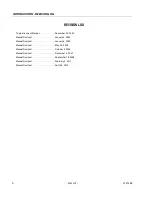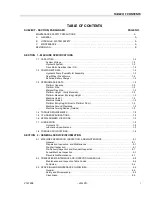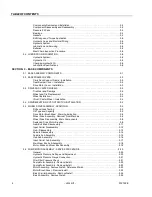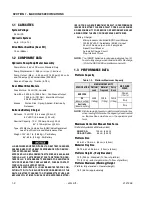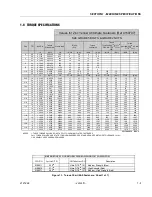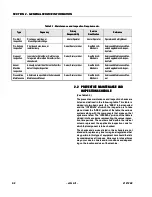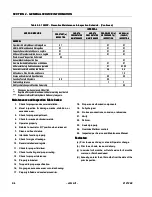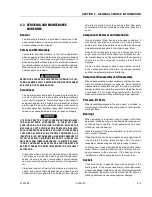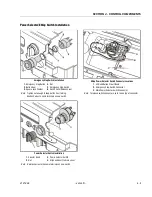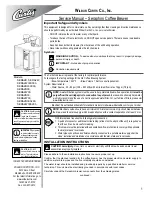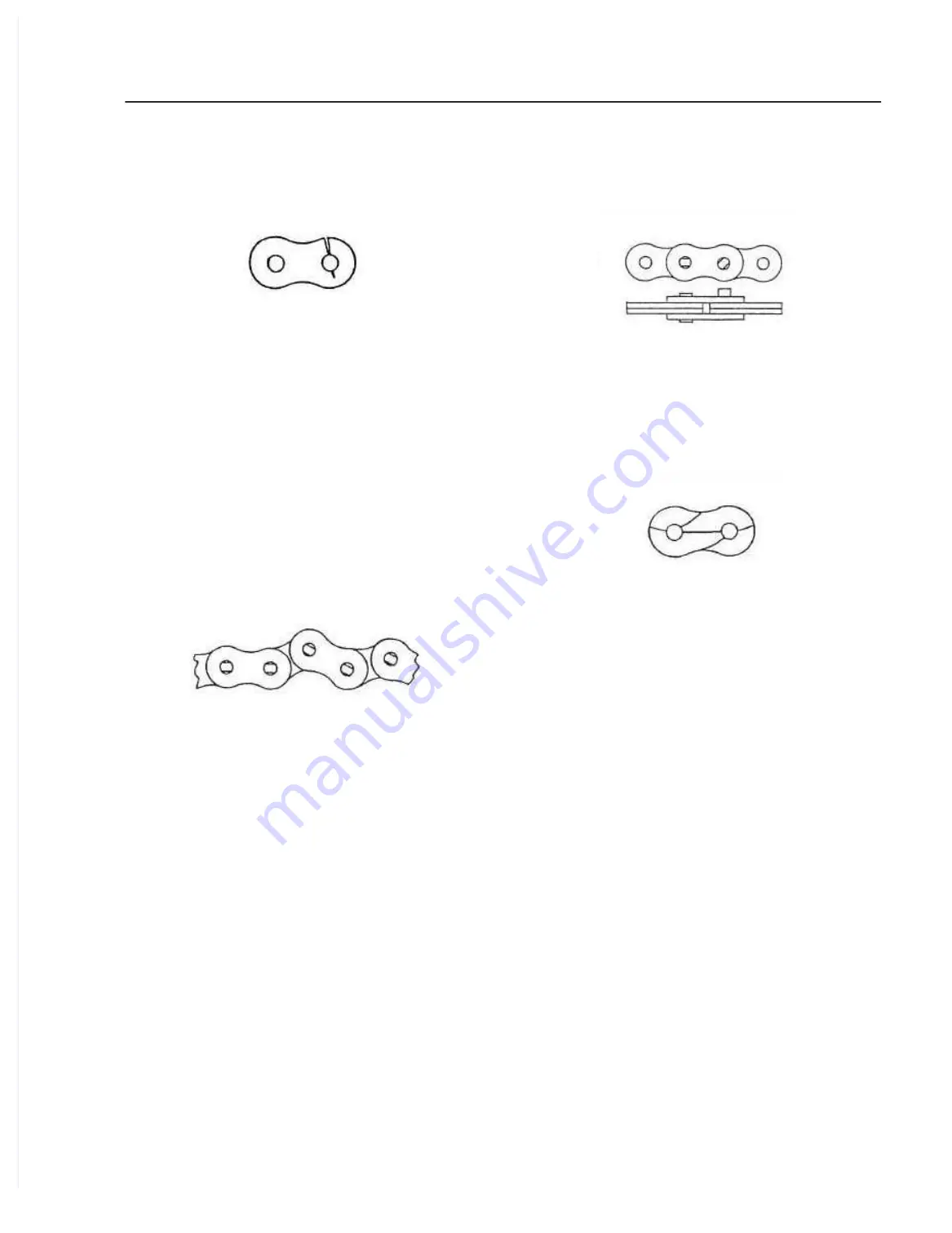
SECTION 2 - GENERAL SERVICE INFORMATION
3121228
–
JLG
Lift
–
2-7
are on the verge of cracking. Fatigue and ultimate
strength failures on JLG Lifts are incurred as a result of
severe abuse as design specs are well within the rated lift-
ing capacity of these chains.
Tight Joints:
All joints in the leaf chain should flex freely.
On leaf chain, tight joints are usually caused by rust/corro-
sion, or the inside plates “walking” off the bushing. Limber
up rusty/corroded chains
(after inspecting care fully)
with
a heavy application of oil
(preferably a hot oil dip)
. Tap
inside “walking” plates inward; if “walking” persists,
replace the chain. This type of problem is accelerated by
poor lubrication maintenance practice, and most tight
joint chains have been operated with little or no lubrica-
tion. Tight joints on leaf chain are generally caused by:
a. Bent pins or plates.
b. Rusty joints.
c. Peened plate edges.
Oil rusty chains, and replace chains with bent or peened
chain components. Keep chains lubricated.
Protruding or Turned Pins:
Chains operating with inade-
quate lube generate tremendous friction between the pin
and plates (pin and bushing on leaf chain). In extreme
cases, this frictional torque can actually turn the pins in
the outside press-fit plates. Inspect for turned pins, which
can be easily spotted as the “V” flats on the pin heads are
no longer in line. Replace all chains showing evidence of
turned or protruding pins. Keep chains lubricated.
Stress Corrosion Cracking:
The outside link plates,
which are heavily press-fitted to the pins, are particularly
susceptible to stress corrosion cracking. Like fatigue
cracks, these initiate at the point of highest stress (aper-
ture) but tend to extend in an arc-like path, often parallel to
the rolling grain of the material.
Als o, mor e the n one cra ck can often app ear on a lin k
plate. In addition to rusting, this condition can be caused
by exposure to an acidic or caustic medium or atmo-
sphere. Stress corrosion is an environmentally assisted
failure. Two conditions must be present; corrosive agent
and static stress.
In the chain, static stress is present at the aperture due to
the press fit pin. No cycle motion is required and the
plates can crack during idle periods. The reactions of
many chemical agents (such as battery acid fumes) with
hardened metals liberate hydrogen which attacks and
weakens the metal grain structure.
Chain Anchors and Sheaves:
An inspection of the chain
must include a close examination of chain anchors and
sheaves. Check chain anchors for wear breakage and
misalignment. Anchors with worn or broken fingers should
be replaced. They should also be adjusted to eliminate
twisting the chain for an even load distribution.
Inspect the sheaves, sheave bearings, sheave grooves
and pins for extreme wear, replace as necessary. A worn
sheave can mean several problems, as follows:
a. Chains too tight.
b. Sheave bearings/pin bad.
c. Bent/misaligned chains.
TIGHT JOINTS
ABNORMAL PROTRUSION OR
TURNED PINS
ARC-LIKE CRACKED PLATES
(STRESS CORROSION)


